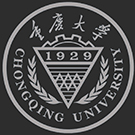Lecture Topics:Structure and Gas Transport at the Polymer-Zeolite Interface: Influence on Performance of Mixed Matrix Membranes
Presenter:Prof. Suresh K. Bhatia University of Queensland, Australia (Academician of Australian Academy of Science, Technology and Engineering, Academician of Indian Academy of Sciences)
Lecture time: October 10, 2019 (Tuesday) 10:00 am
Lecture Venue: 303, School of Energy and Power Engineering
Lecture content:
Mixed matrix membranes (MMM) have attracted much recent attention as materials for gas separation due to their outstanding performance, exceeding the Robeson upper bound. Such membranes are conventionally prepared by incorporating inorganic fillers such as graphene, zeolite, silica, carbon nanotubes and metal organic framework in a bulk polymer matrix. However, the ultimate success of these advanced membranes depends on the material selection and interface defect elimination. Hence, nanoscale understanding of polymer structure near a surface and gas transport at the interface is critical to the design of these advanced gas separation technologies.
Here we report a comparison of the adsorption and transport characteristics of pure component CO2 and CH4 in polyimide (PI), MFI zeolite and a PI-MFI zeolite composite membrane using equilibrium Molecular Dynamics (EMD) simulations. Incorporation of MFI zeolite in PI results in the improvement of kinetic selectivity of CO2 over CH4. Further, the results indicate the existence of a densified polymer region at the polymer-zeolite interface, having thickness around 1.2 nm, in which gas transport is about an order of magnitude slower than in the bulk polymer; this offers an extra resistance to gas diffusion. Zeolite crystal size has little effect on the polymer structure and gas transport at the polymer-filler interface. To extract gas adsorption isotherms, we implemented a two-step methodology involving coupled GCMC and NPT-EMD simulations, considering the dynamics and structural transitions in the polymer matrix upon gas adsorption, and investigated the isotherms of CO2, CH4 in pure and composite polymer membranes. The sorption results indicate that incorporation of MFI zeolite in PI improves the adsorption selectivity of CO2 over CH4. We have also developed a procedure for multiscaling these results, by membrane scale simulations using the isotherms and transport properties from the molecular dynamics simulations. These simulations demonstrate significant increase in permeability with increase in CO2/CH4 selectivity for the hybrid system, as compared to the properties of the pure PI polymer membrane. The methodology developed here offers an attractive option for the in silico design of mixed matrix membranes specific to a given application.
Introduction of the presenter:
Professor Bhatia received his PhD in Chemical Engineering from University of Pennsylvania, and joined academia a couple of years later, after working in Mobil R&D. He joined the Department of Chemical Engineering at The University of Queensland in 1996, after spending 2years at University of Florida and 12 years at Indian Institute of Technology in Mumbai. His main research interests are in the simulation of adsorption and transport in nanoporous materials, and in heterogeneous reaction engineering, where he has authored over 260scientific papers in leading international journals. He is highly recognised for development of theRandom Pore Model, widely used in modelling the kinetics of gas-solid reactions, particularly coal gasification, and for the development of novel models of transport at the nanoscale and density functional theory of adsorption, in conjunction with molecular dynamics and Monte Carlo simulations. He has also developed hybrid reverse Monte Carlo simulation-based techniques for atomistic modelling of disordered materials.
He has received numerous awards for his research, including the Herdillia Award for Excellence in Basic Research in Chemical Engineering, the S. S. Bhatnagar Prize for Engineering Sciences from the Government of India, the ExxonMobil Award for excellence in Chemical Engineering, from the Institution of Chemical Engineers, and the University of Queensland Vice-Chancellor’s Award for Research Excellence. Between 2010 and 2015 he held an Australian Professorial Fellowship from the Australian Research Council. He is a Fellow of two major academies – Australian Academy of Technological Sciences and Engineering, and the Indian Academy of Sciences - and of the Institution of Chemical Engineers. He served as the Regional Editor of the international journal Molecular Simulation between 2009 and 2015. Between 2007 and 2009 he was the Head of the Division of Chemical Engineering at The University of Queensland, and was instrumental in its subsequent elevation to the School of Chemical Engineering.
 LOCATION :
NEWS & EVENTS
>>
Announcements
>>
Content
LOCATION :
NEWS & EVENTS
>>
Announcements
>>
Content
 LOCATION :
NEWS & EVENTS
>>
Announcements
>>
Content
LOCATION :
NEWS & EVENTS
>>
Announcements
>>
Content
